To say that digital marketing largely dictates business success may well be an understatement. In the digital age, tech-savvy audiences expect holistic, omnichannel marketing experiences to convert. In response, video usage online is going through the roof, and customer journeys are expanding to diverse channels.
This marketing landscape is rife with challenges, understandably. From audience identification and channel selection to budgeting and adjusting, navigating it is a strenuous process with ample possible pitfalls.
In turn, this abundance of factors can hamper your ability to measure digital marketing effectiveness. We’re here to discuss this final point today, hopefully inspiring you to approach it strategically.
Set The Groundwork For Digital Marketing
Initially, setting the groundwork for digital marketing will help remove a substantive amount of friction. It will allow you to focus better on your industry’s and business’s unique needs, ensure better collaboration, and pinpoint specific, goal-driven metrics to track.
In brief, and no particular order, consider the three following fundamentals.
#1 Keep Your Efforts Industry-Specific
First, especially if you’re now acquiring experience with marketing, it is often valuable to keep an eye on your industry. Some marketing channels, like email, hold universal appeal, but others better suit specific industries and businesses.
For instance, brightfuturestreatment.com advises approaching healthcare marketing through a combination of Search Engine Optimization (SEO) and Pay-per-Click (PPC) marketing in roughly equal measures. However, this combination may not be equally useful for AEC marketing, and the relocation industry negotiates ratios.
#2 Get Your Employees Onboard
Beyond your industry, you will also need to focus on your own business. Specifically, before embarking on virtually any large-scale endeavor, you should strive to ensure the cooperation of your staff.
As we’ve highlighted before, a workplace culture of active collaboration begins with employee onboarding. In marketing contexts, it should progress into breaking down data silos between teams to allow for seamless coordination.
Communication channels should be established and known, and employees should be well-informed in advance.
#3 Define Your Goals
Finally, to measure digital marketing effectiveness, you and your employees should know exactly what your efforts intend to achieve. For this purpose, you should clearly and accurately define your goals beforehand to pinpoint valuable Key Performance Indicators (KPIs).
The best way is through the S.M.A.R.T. paradigm, as Forbes defines it:
- Specific; your goals clearly outline the desired outcome
- Measurable; your objective is quantifiable, and the data to measure success can be collected
- Achievable; your goals are realistic in relation to your resources and market position
- Relevant; your goals align with your business’s broader mission and benefit it
- Time-Bound; your efforts have a clearly defined deadline to measure timeliness against
Adhering to all of the above should ensure your efforts always align with your explicit goals and remain clear.
Measure The Effectiveness of Digital Marketing Efforts With Proper KPIs
That said, your exact digital marketing efforts will vary considerably depending on your industry, needs, goals, and other factors. An SEO campaign will have entirely different goals and structure than virtual events, for instance, so your approach to monitoring each must necessarily differ.
As such, pinpointing proper KPIs for each is necessary, and thankfully S.M.A.R.T. goals typically ensure your ability to do so. Here we may outline the most universally useful KPIs, and you may then use the ones most relevant to you.
#1 Traffic, Traffic Sources, and Visitors
For most marketing campaigns, traffic is a primary goal – or a very beneficial byproduct, if not one. As such, you may begin by focusing on traffic in itself through such metrics as:
- Overall traffic. This is your overall traffic before all other elements. You may then seek correlations between this metric and your campaigns.
- Unique traffic. Unique visitors who visit your website during a specific timeframe.
- New vs. returning traffic. A comparison KPI between unique visitors and returning visitors during a specific timeframe.
Understandably, each is best suited to measure the digital marketing effectiveness of specific campaigns. For instance, a brand awareness campaign benefits most from unique traffic, while a conversion campaign may target returning traffic for repeat sales.
Once you have pinpointed the ones most relevant to you, you may proceed to analyze traffic and attribute it to specific sources:
- Mobile traffic; the percentage of your visitors using mobile devices to navigate your website.
- Search engine traffic; the traffic generated by search engine results – typically attributable to SEO campaigns.
- Other traffic sources; traffic generated by backlinks, paid ads, social media activity, and other sources.
If you’re engaged explicitly in traffic-based campaigns, exact traffic sources may be the most valuable KPI to track. Knowing which PPC ads or SEO keywords perform best can offer invaluable, actionable insights.
#2 Page Metrics; Time on Page, Pages Per Session, Etc.
Beyond traffic, you may then begin to track positive page metrics. Where traffic metrics gauge your traffic generation effectiveness, page metrics gauge the effectiveness of enticing traffic into conversions.
Here, you may consider the following:
- Time on a page is the amount of time visitors spend on a specific page.
- Pages per session are how many pages a visitor visits during a session.
- Average time spent per visit is the average amount of time visitors spend during a session.
These may help you get a broader image of your website’s performance and measure the effectiveness of your digital marketing efforts as regards content marketing. For more specific KPIs, you may use a heat map or other analytics tools and determine the following:
- Best-performing pages that receive the most traffic.
- Best landing pages that most often constitute your website’s first point of contact.
- On-page engagement that incites the most engagement, from time on page to engagement with visual content.
If you’re particularly engaged in social media, you may also take the time to track which pages get the most shares and on which platforms. Moreover, if your blog features a comment section, you may also keep an eye on direct feedback – positive or negative.
#3 Bounce Rates and Exit Rates
Positive page metrics aside, you should also track negative metrics to inform timely adjustments. The two most notable ones in this category are:
- Bounce rates. The rates at which visitors leave your website shortly after landing on it. In fact, Google finds that slow loading times are the primary cause of high bounce rates. By definition, bounce rates directly impact final conversions – making it a vital metric to track.
- Exit rates. The rates in which visitors leave from a specific page in relation to all visitors. This metric can help you pinpoint your worst-performing pages and fine-tune them accordingly.
For additional information of this type, you may also keep an eye on direct audience feedback. Simple comments that a page was confusing or unhelpful can best highlight weak points as you measure digital marketing effectiveness.
#4 Clicks, Click-Through Rates, and Cost Per Click
With leads acquired through website traffic, emails, or other channels, you may gauge engagement. This vast category of KPIs sees many channel-specific applications but always ultimately focuses on desirable actions – primarily clicks.
For the most notable examples of this category, consider the following:
- Clicks; clicks on any given copy element. Beyond conversions, this can help you identify misleading elements which confuse visitors, such as visual content which appears clickable.
- Click-Through Rates; the rates at which audiences click on links, Calls to Action (CTAs), or other desirable elements. This is measured against the impressions of your ads, emails, or other marketing material you’re monitoring.
- Cost Per Click (CPC); the cost for each click generated by PPC campaigns. Your CPC should ideally be followed by monitoring conversion rates to see the best gauge cost-efficiency.
As with the above, the exact value of each such metric will depend on your campaigns. Still, click metrics are a prime indicator of engagement and value delivered – so they should not be overlooked.
#5 Conversions and Customer Acquisition Cost
Finally, once you’ve secured both traffic and engagement, you may delve deeper into conversions. Having touched on CPC, improving your final “Return on Investment” (ROI) will require thorough conversion insights.
They’re also among the best ways to measure the effectiveness of your digital marketing efforts as they progress, as they can best highlight how enticing your material truly is.
For this category, consider the following:
- Conversions; your total conversions during a specific timeframe. You may compare historical conversions to current ones, alongside seasonal fluctuations, to identify the impact on performance.
- Conversion Rates; the rates at which qualified leads convert to customers, measured against total interactions. Identifying underperforming ads, pages, or other material in this regard may inform and drive your Conversion Rate Optimization (CRO) efforts.
- Customer Acquisition Cost (CAC); the final cost of acquiring an individual customer. CAC is calculated by dividing total sales and marketing costs by the amount of customers acquired during the same period. To determine final profitability, you may then compare CAC to customer Lifetime Value (LTV), Average Order Value (AOV), and other metrics.
It is important to note that what constitutes a conversion depends on your campaigns and goals. Google distinguishes between micro and macro conversions; both include desirable actions, but the latter are completed transactions.
Bottom Line
In closing, an increasingly competitive digital marketing landscape mandates that you closely measure digital marketing effectiveness across channels. Especially if you’re new to marketing or are operating on a tight budget, you must do so. Identifying your best and worst performers through relevant KPIs can make a substantive difference in your efforts – and, in turn, your business’s success.
If you need additional information on ensuring your employees’ collaboration throughout this task, please feel free to contact us. We are happy to help you attract the best talent for the job and your business.







